

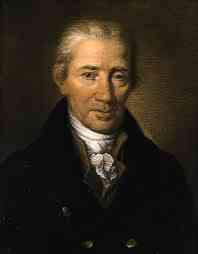
Johann Georg Albrechtsberger
Source: Raptus Association
Born on 3 February 1736 in Klosterneuburg, Austria, Johann Georg Albrechtsberger left a legacy of 300 keyboard works (organ intensive), 300 sacred works and about 240 others. Albrechtsberger was also a music theorist and teacher with an impressive list of pupils including Beethoven. In addition, he was friend to both Joseph Haydn and Mozart. An altogether important figure of the age, though Albrechtsberger leaned back on baroque form here and there he was largely a contemporary galant and classical composer hep with the times.
Albrechtsberger was taught music by Augustinians when he became a choir boy at Klosterneuburg Abbey at age seven. He there learned thoroughbass and organ where an organ was built to accommodate his age-seven size [Oron]. In 1749 Albrechtsberger shifted over to the Benedictines at Melk Abbey in Vienna where he prepared for study in philosophy in 1754. He was firmly acquainted with such as counterpoint by the time he began working as an organist in Raab in 1755. In 1557 he moved over to Maria Taferl where he composed 'Concerto for Alto Trombone and Orchestra in B flat Major' in 1759:
Johann Georg Albrechtsberger
'Concerto for Alto Trombone and Orchestra' B-flat major 1759
Ensemble Cuore / Kenji Fujita
Alto trombone: Kazuyuki Yamashita
Albrechtsberger returned to Melk Abbey where he authored 'Concerto for Jew's Harp, Mandora and Orchestra' in E Major in 1765 [Sachs]. The Jew's harp also called a jaws harp, juice harp or mouth harp is believed to be of Turkic (Turkish) origin in Siberia. It was in use as early as 1800 B.C. in Turkic China. In Germany the Jew's harp is called a Maultrommel (mouth drum). In French it is called the jeu-trompe (toy trumpet). That "Jew" had been derived of "jeu" has been suggested, but the instrument more likely got its name due to Jews who sold them commercially in England. As for the mandora which is also called a mandola, that is a kind of lute developed into the mandolin.
Johann Georg Albrechtsberger
'Concerto for Jew's Harp, Mandora & Orchestra' E major 1765
Movement 1: Tempo moderato
Münchener Kammerorchester / Hans Stadlmair
Jew's harp: Fritz Mayr Mandolin: Dieter Kirsch
Albrechtsberger became organist at the imperial court of Vienna in 1772. The Habsburg Holy Roman Emperor at that time was Joseph II. Johann's free form divertimento (amusement) below was likely written for the royal house in 1777. His compositions in manuscript up to then, he published his first book, presumably Op 1, in 1780 titled 'Twelve Fugues'. His Op 2 which is 'Six Quatuors en Fugues' may have followed the same year. His Op 3 saw print in 1781 titled 'Twelve Preludes and One Fugue'. His 'String Quartet' in C major from Op 7 below possibly arrived in 1787 [GMG]. Albrechtsberger is another case of confusing opus numbers, for his other Op 7 is 'Six Fugues' for harpsichord or organ printed in 1796. Come his 'Gründliche Anweisung zur Composition' in 1790, his major work in music theory published (without opus number) twice more in 1804 and 1821 [IMSLP].
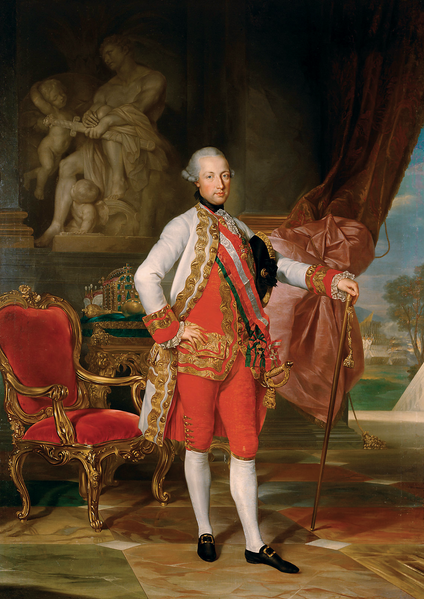
Holy Roman Emperor Joseph II 1765-1790
Source: Wikipedia
Johann Georg Albrechtsberger
'Divertimento No. 2' C major 1777
Flute: Pál Németh Violin: Piroska Vitárius
Viola: Miklós Csikós Cello: Ottó Nagy
Johann Georg Albrechtsberger
'String Quartet' C major Op 7:4:1 1787
Movement 1: Allegro moderato
The Authentic String Quartet
Joseph II died on 26 February 1790 upon which his brother, Leopold II, became Emperor but briefly until his own demise on 1 March 1792. As well, Albrechtsberger became Kapellmeister of St. Stephens Cathedral in 1792. That was the year that he also wrote his 'Krönungsmesse' ('Coronation Mass') in C major for the crowning of Franz II at Frankfort Cathedral on 14 July 1792. Franz II was the 45th and last Holy Roman Emperor since Charlemagne unofficially in 800 A.D. in eastern Carolingian France. The Holy Roman Empire was fundamentally an extension of Papal Rome into northern Europe. This alliance soon shifted from France toward a Germanic arena whence it wouldn't be long before France became it and Rome's greatest antagonist over the centuries. Indeed, the French finally put an end to the Empire now a millennium old when Franz II abdicated from his position as Emperor in 1806 upon confrontation with Napoleon at the Battle of Austerlitz in December 1805. He later became the first president of the German Confederation (Germany) in 1815 until 1835. The German Empire would be formed out of this confederation in 1871.
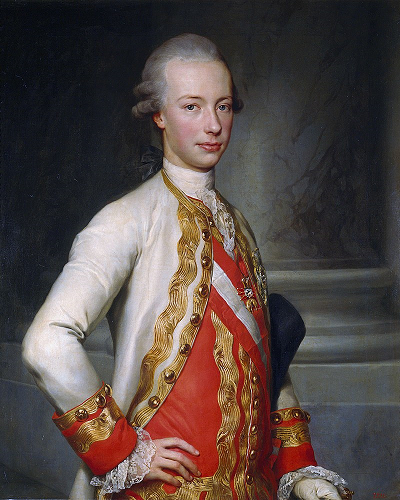
Holy Roman Emperor Leopold II 1790-1792
Source: Wikipedia
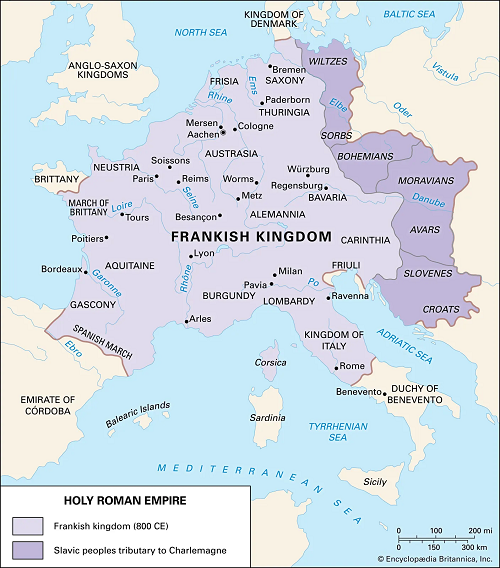
Bed of the Holy Roman Empire 800 AD
Source: Britannica
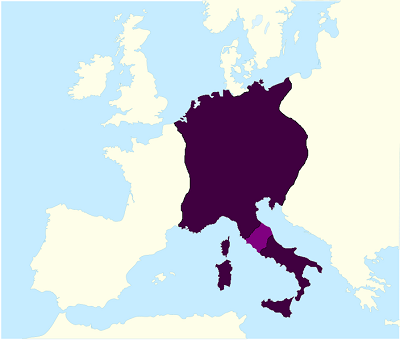
Holy Roman Empire Greatest Extent 1200 AD
Source: Wikimedia Commons
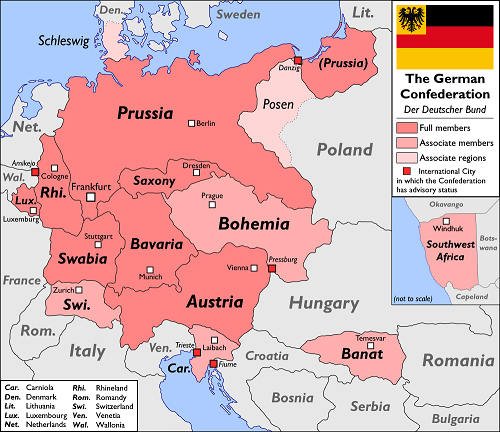
German Confederation sometime prior to 1871
Source: Deviant Art
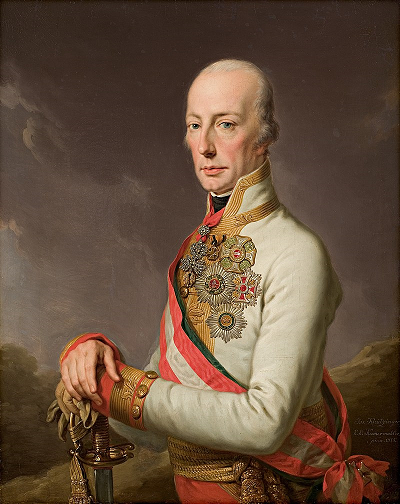
Final Holy Roman Emperor Franz II 1792-1806
First Emperor of Austria as Franz I 1804-1835
First President of the German Confederation 1815-1835
Source: Wikipedia
Johann Georg Albrechtsberger
'Krönungsmesse' ('Coronation Mass') C major
For the coronation of Franz II at Frankfurt Cathedral on 14 July 1792
Canto Arrіаnіs / Concerto Sacro / Ingmar Bеck
Johann's 'String Quartet' from Op 20 below arrived in 1798. He wrote an estimated 79 string quartets from 1780 to 1808. Among his latter works is 'Prelude and Fugue' in C major from Op 26 in 1808. His Op 27 is his latest identified, a concerto for mandora mentioned in 'The Guitar and Mandolin' by Philip James Bone in 1914 (alt).
Johann Georg Albrechtsberger
'String Quartet' C major Op 20:5 1798
Rossini Strings
Kunsthalle Rostock in Mecklenburg-Vorpommern, Germany, on 18 March 2012
Johann Georg Albrechtsberger
'Prelude and Fugue' For organ or harpsichord 4 hands C major Op 26 C 1808
Organ: Fabio Ciofini / Jordi Vergés
Albrechtsberger died in Vienna on 7 March 1809. It was 1826 when prior student, Ignaz von Seyfried, published 'J.G. Albrechtsberger's Collected Writings on Thoroughbass, Harmony & Composition'.
Sources & References for Johann Georg Albrechtsberger:
Encyclopædia Britannica (1911)
Aryeh Oron (Bach Cantatas)
VF History (notes)
Audio of Albrechtsberger: Classical Archives Naxos Presto YouTube
Compositions:
IMSLP (by genre / instrument)
Holy Roman Empire:
Dissolution / Battle of Austerlitz 1805 / Franz II abdicates 1806
Mapping from the Treaty of Verdun in 843 to the German Empire of 1871
Publications:
Gründliche Anweisung zur Composition (Albrechtsberger / 1790):
HathiTrust Internet Archive Internet Archive (PDF)
J.G. Albrechtsberger's Collected Writings on Thoroughbass, Harmony & Composition (Ignaz von Seyfried / 1826):
Internet Archive (digital copies)
John Mark Ockerbloom (corpus)
Recordings of Albrechtsberger: Catalogs: Discogs Music Brainz RYM
Scores / Sheet Music: IMSLP (digital copies) Musicalics (vendor) ScorSer
Students of Albrechtsberger: Wikipedia
Bibliography:
The Cambridge History of Western Music Theory (ed. by Thomas Christensen / 2006)
Other Profiles:
Bobb Edwards (Find a Grave)
Project Gutenberg Encyclopedia
Chris Whent (HOASM)
Classical Main Menu Modern Recording
|
|
hmrproject (at) aol (dot) com